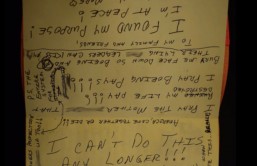To get around media censorship in Russia, a Finnish newspaper is inserting news articles about the conflict in Ukraine into a game that is very popular among Russian gamers.
Trick to Circumvent Russian Media Censorship
Russian authorities have restricted access to Helsingin Sanomat and other international independent media. However, they have not yet taken action against online games, according to Antero Mukka, editor-in-chief of Helsingin Sanomat.
The Helsingin Sanomat, or Hesari as it is more often called, is the most widely read paid newspaper in Finland and the Nordic nations.
The said publication was able to get through Russia's censorship by using the first-person shooting game Counter-Strike, as reported by The Guardian.
In this game, the players assume the roles of terrorists and counter-terrorists in high-stakes, timed rounds. Many matches take place on one of the official maps made available by developer Valve, but players are also free to make their own maps and share them with the community. Reuters said the newspaper did not seek Valve's approval for the campaign since the game supports user-generated material.
On Wednesday, May 3, which coincides with World Press Freedom Day, the Helsingin Sanomat newspaper announced their new campaign.
Mukka said, "To underline press freedom, [in the game] we have now built a Slavic city called Voyna." The term Voyna means war in Russian.
Also Read: Ukraine's Volodymyr Zelenskyy Meets With Nordic Leaders During Surprise Visit to Finland
Concealed Room With War Information
The Helsingin Sanomat has hidden a chamber in the basement of one of the apartment buildings that comprise the Soviet-inspired cityscape. This is where the gamers may read Russian-language coverage from the paper's war reporters in Ukraine. Mukka remarked, "In the room, you will find our documentation of what the reality of the war in Ukraine is."
The digital chamber is lighted only by red bulbs, and its walls are covered with newspaper clippings and photographs documenting tragedies like the ones in the Ukrainian villages of Bucha and Irpin.
Players may locate a map of Ukraine on one of the walls that recount assaults on the civilian population. A tape of someone reading stories from the Russian-language Helsingin Sanomat can be heard in the background.
Mukka said that this data was unavailable in official Russian state propaganda outlets.
Since its introduction earlier this week, the map has been downloaded over 2,000 times. There were reportedly 4 million Russians who played the game. Still, the newspaper is unable to trace downloads on a regional basis at this moment.
This proves, as Mukka said that it is impossible to keep people in the dark and stifle the free flow of knowledge in the modern world.
"I think Russians also have the right to know independent and fact-based information so that they can also make their own life decisions," he added.
Also Read: Russia-Ukraine War: Kremlin Claims Kyiv Tried to Assassinate Putin With Drone Attack








